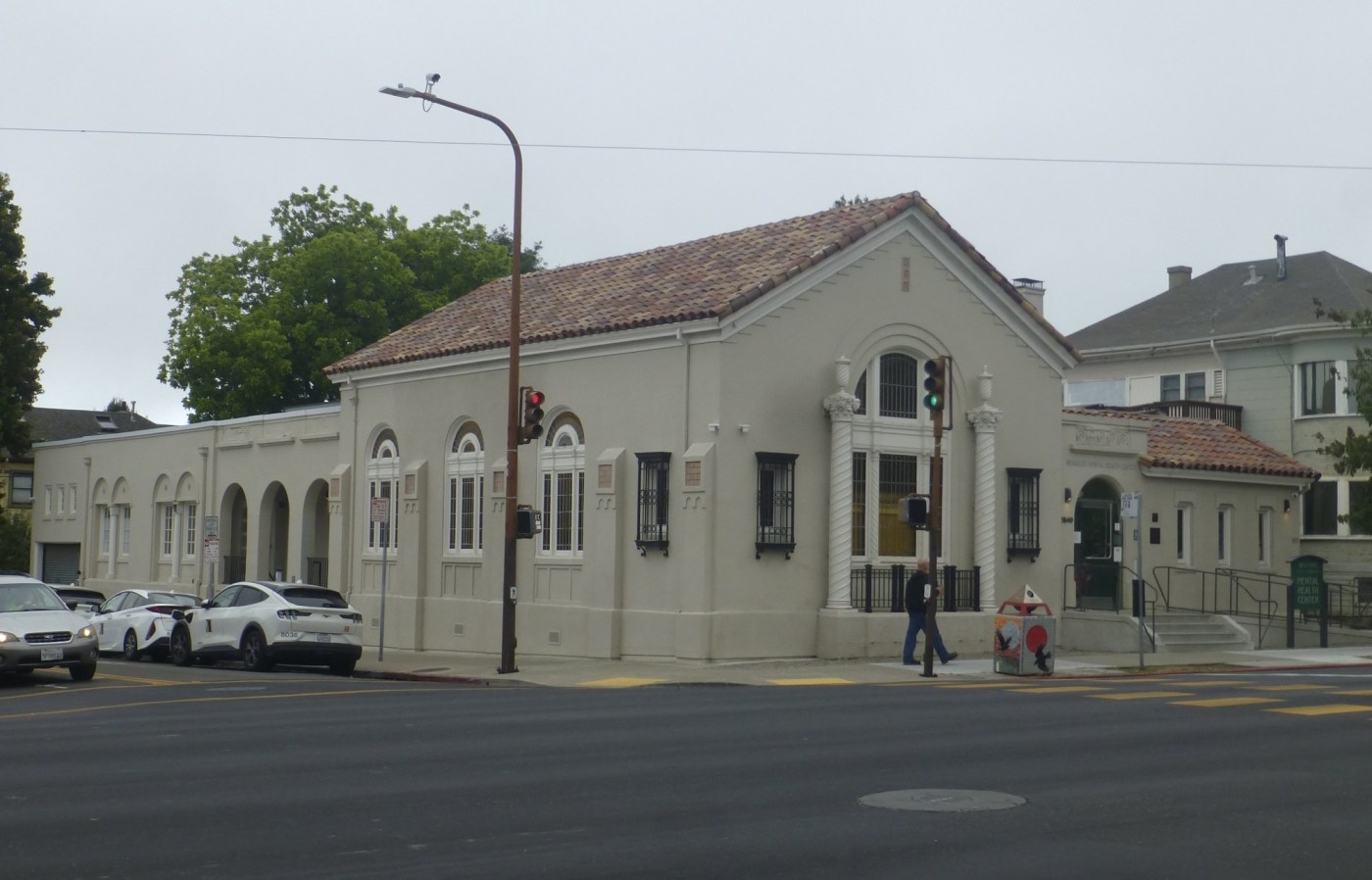
A century ago, on July 25, 1925, the Berkeley City Council overturned a decision by the city’s Planning Commission and granted approval, 6-2, to rezone the northwest corner of Grove Street (today’s Martin Luther King Jr. Way) and Derby Street for a mortuary proposed by undertaker Edward Niehaus.
“The decision ends two years of zoning controversies caused by Niehaus trying to get a new location in Berkeley,” the Berkeley Daily Gazette reported.
During discussion, a Councilmember observed that virtually every mortuary previously approved in Berkeley had faced zoning opposition. The building still stands, and the city of Berkeley used it for offices today.
Racist neighbors: The Channing Way Club, a group organized by residents living west of the city’s downtown, held a “mass meeting” on July 23, 1925. One of their major discussion topics was how to prevent an African American property owner in the area from building two bungalows on a lot he had purchased at the northeast corner of Dwight Way and McKinley Street.
The group decided, as part of an effort to accomplish what the Gazette characterized as pursuing “their right to keep the district free from colored people,” to ask the City Council to create a 20-foot setback requirement along Dwight Way from McKinley to what is now Martin Luther King Jr. Way (the former Grove Street) that would be combined with a similar setback on both sides of McKinley Avenue from Channing to Dwight.
The petition to the council was certainly and openly racist, since its advocates told the meeting they believed the two setbacks would make the corner property unbuildable for two dwellings and the African American owner probably couldn’t afford to proceed with building just one dwelling. His construction permit was pending before city staff.
Scopes trial: July 21, 1925, the “Scopes Monkey Trial” in Dayton, Tennessee, ended with a conviction. According to newspapers, the jurors took just seven minutes to deliberate and return a verdict. Sentenced to a $100 fine, John Scopes told the presiding judge, “I feel that I have been opposing an unjust law. I will continue to support my ideals.”
On July 26, 1925, less than a week after the trial’s end, the winning prosecution attorney, William Jennings Bryan, died of a stroke in Dayton, making new front-page news across the nation. Bryan had been a major force in American politics for more than a quarter-century, having run three times for president as a Democrat and serving as U.S. Secretary of State under President Woodrow Wilson.
Dog damage: July 25, 1925, “a collie pup who has a great fondness for chewing things up, proved a costly nuisance for Miss Mabel Clune, who operates a millinery store at 2111 Center Street.”
The dog came in with a woman and “selecting one of the choicest hats in the store, made way with it and chewed the hat into bits, Miss Clune told police.” The woman and dog left without identifying themselves, and Clune asked police to find them so she could try to get reimbursement for the $10 hat.
Near-centenarian: Berkeley resident William B. Brown, who had come to California in the Gold Rush of 1849, died July 23, 1925, at the age of 99. He had fully traversed the continent during America’s westward expansion.
Born in Virginia, he moved to Missouri with his family when a child, then later emigrated to California. He pursued gold mining, then bought land in Solano County and brought the rest of his family there. At the age of 70 he went to Alaska to prospect for gold. He had been living in Berkeley for 22 years when he died.
Bay Area native and Berkeley community historian Steven Finacom holds this column’s copyright.